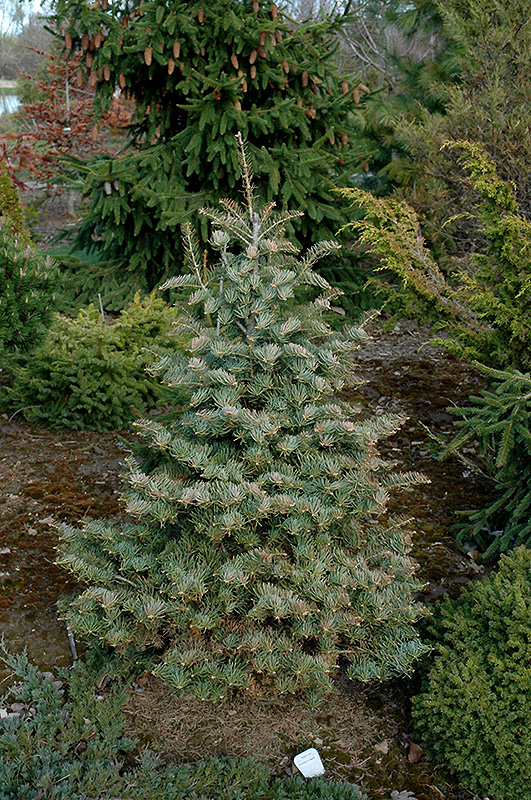Archer's Dwarf White Fir Abies concolor 'Archer's Dwarf' Height: 10 feet Spread: 4 feet
Sunlight:
Hardiness Zone: 4 Other Names: Silver Fir, Concolor Fir, Colorado Fir Description: A pyramidal compact form of the popular white fir featuring superb bluish-white foliage color, makes an excellent addition to the garden for all-season color; avoid hot or dry, windy sites Ornamental Features Archer's Dwarf White Fir is a dwarf conifer which is primarily valued in the landscape or garden for its distinctively pyramidal habit of growth. It has attractive blue evergreen foliage. The needles are highly ornamental and remain blue throughout the winter. Landscape Attributes Archer's Dwarf White Fir is a dense multi-stemmed evergreen shrub with a distinctive and refined pyramidal form. Its relatively fine texture sets it apart from other landscape plants with less refined foliage. This is a relatively low maintenance shrub, and usually looks its best without pruning, although it will tolerate pruning. It has no significant negative characteristics. Archer's Dwarf White Fir is recommended for the following landscape applications; Planting & Growing Archer's Dwarf White Fir will grow to be about 10 feet tall at maturity, with a spread of 4 feet. It tends to fill out right to the ground and therefore doesn't necessarily require facer plants in front, and is suitable for planting under power lines. It grows at a slow rate, and under ideal conditions can be expected to live for 80 years or more. This shrub does best in full sun to partial shade. It prefers to grow in average to moist conditions, and shouldn't be allowed to dry out. It is not particular as to soil type or pH. It is somewhat tolerant of urban pollution, and will benefit from being planted in a relatively sheltered location. Consider applying a thick mulch around the root zone in winter to protect it in exposed locations or colder microclimates. This is a selection of a native North American species.![]()
![]()
![]()
![]()
![]()
![]()
![]()
![]()
![]()
![]()
![]()
Characteristics
Applications
Ornamental Features
This guide is an online resource representing many of the varieties that we carry over the course of the season, and is intended for informational purposes only. Inventory varies seasonally, so we cannot guarantee that every plant will be in stock at all times - please contact the store directly for current availability. It does not include our entire selection of plants, so be sure to visit our store to see varieties that may not be represented on this list.


